Blog
My blog01.

0 min
|
|
|
Streamline Your Workflow with These AI Marketing Tools
In an era where marketing moves faster than ever, staying ahead means working smarter, not harder. That’s where AI marketing tools come in. These intelligent solutions analyze data, automate repetitive tasks, and even generate creative content, helping teams focus on strategy and results rather than routine work.
In an era where marketing moves faster than ever, staying ahead means working smarter, not harder. That’s where AI marketing tools come in. These intelligent solutions analyze data, automate repetitive tasks, and even generate creative content, helping teams focus on strategy and results rather than routine work.
From crafting targeted campaigns to optimizing performance across multiple channels, modern marketing tools powered by artificial intelligence have become essential for businesses looking to grow efficiently. In this post, we’ll explore how AI can streamline your workflow and highlight some of the most effective tools to add to your marketing stack.
Why Use AI in Marketing?
AI has transformed how marketers plan, execute, and measure their campaigns. Instead of spending hours on manual data analysis or repetitive tasks, teams can now rely on intelligent systems that handle much of the heavy lifting.
By using AI marketing tools, brands can identify customer trends faster, deliver personalized experiences, and allocate budgets more effectively. These tools help marketers make data-driven decisions while maintaining creativity and consistency across all channels.
With the support of advanced marketing automation tools, it becomes easier to manage campaigns, analyze audience behavior, and track performance in real time. The result is a more efficient workflow, improved accuracy, and stronger engagement with the right audience at the right time.
Best AI Marketing Tools to Try in 2025
Choosing the right AI marketing tools can redefine how your marketing team works every day. Whether your goal is to speed up content creation, automate repetitive tasks, or make better data-driven decisions, these platforms offer a mix of creativity and precision. Below are eight carefully selected tools that can help streamline your workflow and deliver measurable results.
1. Jasper
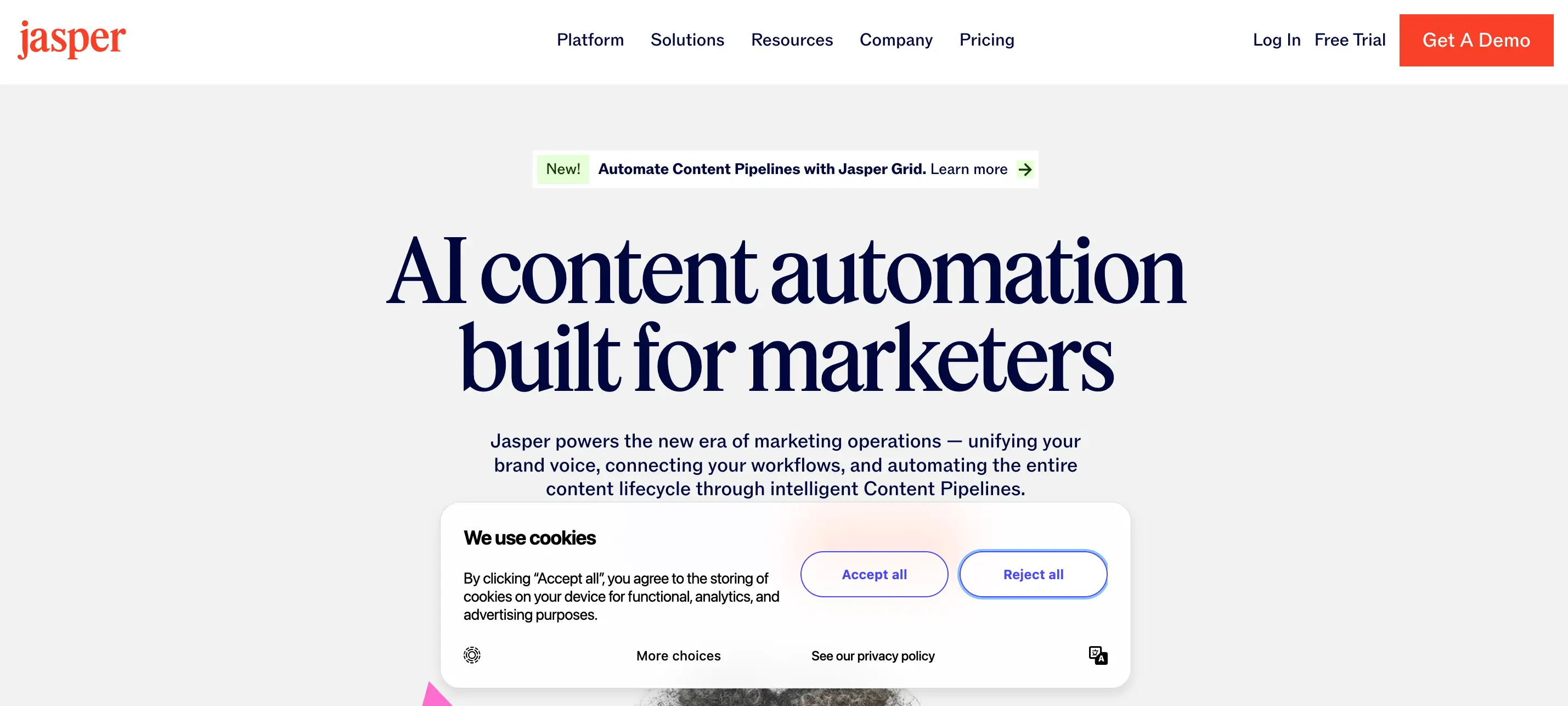
Jasper is one of the most advanced AI content generators available today. It helps marketers craft high-quality blog posts, ad copy, product descriptions, and emails in minutes. The tool adapts to your tone of voice and can generate content in multiple languages, making it suitable for global campaigns.
Jasper also allows users to create custom templates, collaborate across teams, and maintain brand consistency using its Brand Voice feature. It’s a great choice for businesses looking to scale content production without losing authenticity.
Key features:
- AI-powered long-form and short-form content creation
- Brand Voice for tone consistency
- Collaboration tools and document sharing
- Integration with SurferSEO and Grammarly
2. HubSpot AI

HubSpot’s built-in AI tools enhance every stage of the marketing journey, from lead generation to customer retention. The platform’s AI assistant helps draft emails, analyze data, and personalize user experiences automatically. It also predicts which leads are most likely to convert, helping teams prioritize their outreach.
As part of HubSpot’s marketing automation ecosystem, these features blend naturally with CRM, email, and analytics tools, reducing manual work and improving team coordination.
Key features:
- AI content generator for blogs, emails, and ads
- Predictive lead scoring
- Smart CRM integration and workflow automation
- A/B testing and performance analysis
3. Semrush

Semrush remains a cornerstone of SEO and competitive analysis. Its AI-driven insights help marketers discover keyword opportunities, track rankings, and analyze competitors’ performance. Beyond SEO, it supports PPC planning, social media tracking, and content audits.
With its expanding AI capabilities, Semrush now provides automated topic clustering and SERP intent detection, helping you create data-informed strategies that attract the right audience.
Key features:
- Keyword research and SERP analysis
- AI-based topic clustering and intent prediction
- Site audits and backlink tracking
- Competitor monitoring and market insights
4. SurferSEO

SurferSEO helps marketers create content that ranks better in search engines. It analyzes top-performing pages for a given keyword and recommends structure, length, and semantic phrases to include. The AI writing assistant integrates with tools like Google Docs, making it easy to optimize content while writing.
For SEO-focused teams, SurferSEO is an excellent companion that blends AI with real-time data, helping content creators make strategic choices without guesswork.
Key features:
- On-page optimization and keyword density tracking
- SERP-based content analysis
- Integration with Jasper, Google Docs, and WordPress
- Real-time SEO tool scoring and recommendations
5. Zapier AI
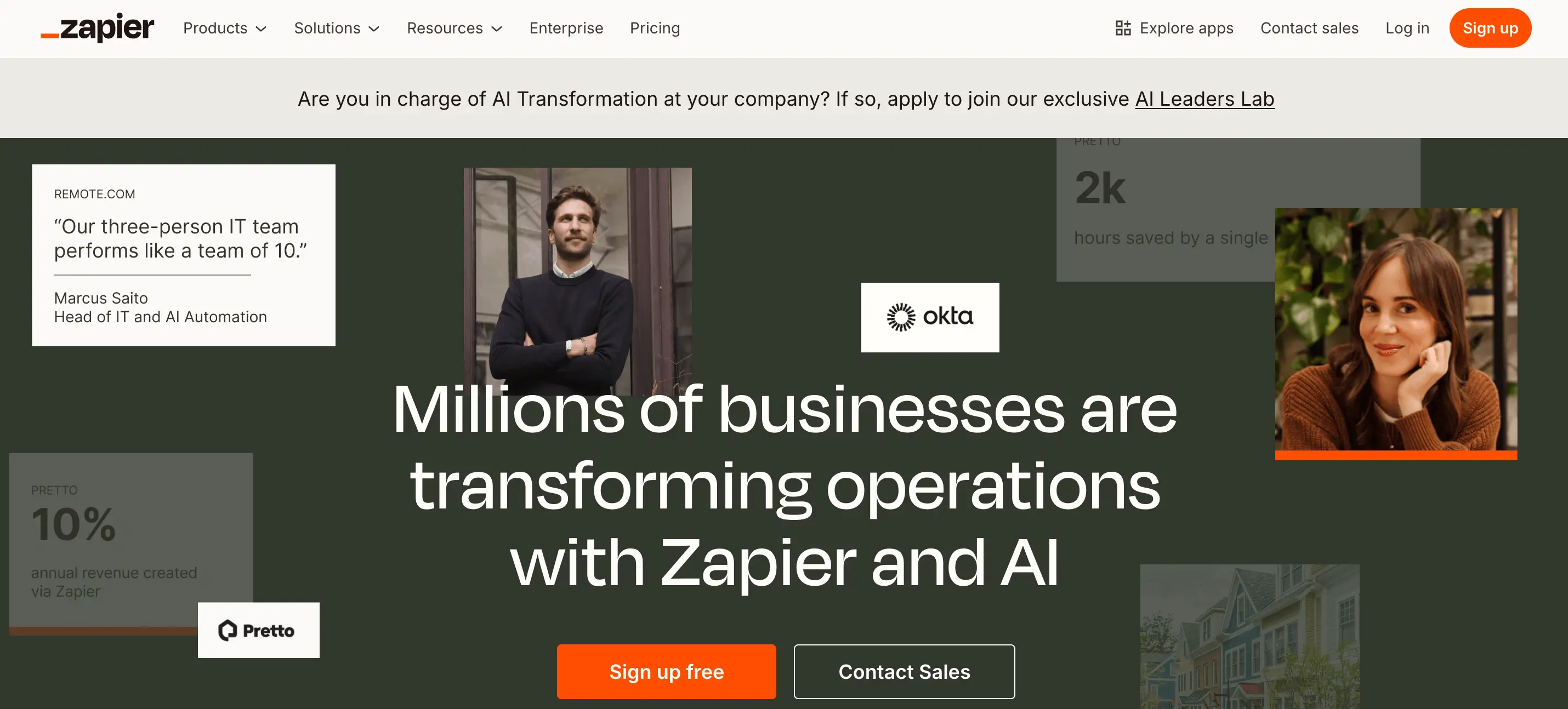
Zapier AI helps marketers automate tasks across different apps without coding. It connects tools like Google Sheets, Slack, HubSpot, and Mailchimp, allowing seamless data transfer and trigger-based workflows. The AI functionality now enables smart filtering, summarization, and task suggestions.
By automating routine marketing processes such as reporting or campaign updates, Zapier gives teams more time to focus on strategic planning and creative execution.
Key features:
- Cross-platform automation between 5,000+ apps
- AI-driven workflow suggestions
- Smart filters and task routing
- No-code interface
6. Brandwatch

Brandwatch is a leader in social listening and audience intelligence. It uses AI to analyze millions of online conversations, providing insights into brand sentiment, market trends, and consumer behavior. This allows marketers to respond faster to opportunities and potential PR risks.
By understanding real-time audience sentiment, companies can make data-backed decisions that strengthen their online reputation and guide campaign strategy.
Key features:
- Sentiment and trend analysis
- Competitor and influencer tracking
- Real-time alerts and reporting dashboards
- Data visualization for audience insights
7. Notion AI

Notion AI combines organization and intelligence in one workspace. Marketers use it to brainstorm content, write meeting notes, summarize briefs, and even generate blog outlines. It helps teams stay aligned, turning raw ideas into actionable tasks within the same platform.
Its AI assistant can also analyze campaign summaries, rewrite content, or create templates that speed up documentation and planning.
Key features:
- Smart writing and summarization assistant
- Idea generation and task management
- Integrated workspace for teams
- Custom prompt templates
Together, these AI marketing tools form a comprehensive toolkit for content creation, automation, research, and analytics. Adopting even a few of them can dramatically improve productivity and help your team focus on high-impact creative work.
Choosing the Right Tools for Your Team
With so many AI marketing tools available, selecting the right ones depends on your goals, team size, and workflow. Some platforms excel at automation and analytics, while others specialize in creativity or collaboration. Before subscribing to any tool, consider how well it fits your daily operations and integrates with your existing systems.
Start by identifying the challenges your team faces most often. Do you need better reporting, faster content creation, or more precise targeting? Then evaluate each platform’s features, pricing, and compatibility with your marketing stack. Choosing tools that align with your processes will prevent overlap and maximize efficiency.
Tips for selecting the right AI tools:
- Assess your goals: Define whether your focus is lead generation, brand awareness, or customer retention.
- Compare integrations: Make sure the tool connects easily with your CRM, email, and analytics platforms.
- Test usability: Look for clean dashboards and intuitive workflows to reduce onboarding time.
- Check scalability: The best software grows with your team and adapts to new marketing channels.
- Combine insights: Pair creative tools with market research tools to gain a deeper understanding of your audience.
A thoughtful selection process ensures that the technology enhances your strategy instead of complicating it. The ideal toolkit will feel seamless, helping your team stay creative, informed, and focused on results.
Conclusion
AI marketing tools have reshaped how teams plan, create, and analyze their campaigns. By automating repetitive work, they help marketers focus on strategy, creativity, and growth.
Still, these tools deliver the best results when supported by a clear brand presence and a well-designed website. When your digital foundation is strong, every campaign and insight works more effectively.
If you want your marketing tools to work smarter, start with a website built to match their potential.
Popular articles02.
In this article, I’ll break down what SEO is, how it works, and SEO strategies so you can use it to improve your site’s performance in search engines.
What Does SEO Stand For?

SEO stands for Search Engine Optimization. At its core, it’s the practice of optimizing your website to appear more prominently in search engine results, especially on platforms like Google.
When someone types a question or keyword into a search engine, they’re met with a list of results. SEO helps your website appear higher on that list by making it more relevant, valuable, and accessible to both search engines and users.
It’s not about tricking search engines; it’s about helping them understand your content and showing that your site deserves to be found.
How Search Engines Work
To understand SEO, it's helpful to know how search engines like Google find and rank content. The process includes three 3 stages: crawling, indexing, and ranking.
- Crawling: Search engines use bots (also called spiders) to scan the internet for new or updated web pages. These bots follow links from one page to another, gathering information along the way.
- Indexing: After a page is crawled, the search engine stores and organizes its content in a massive database known as the index. If your page isn’t indexed, it won’t appear in search results.
- Ranking: When a user enters a search query, the search engine scans its index and delivers a list of results it believes are the most relevant. It ranks them based on hundreds of factors, including content quality, user experience, and site authority.
SEO is about making sure your website is easy to crawl, properly indexed, and optimized to appear among the top results when people search for topics related to your business.
The Main Components of SEO
SEO is made up of several key components that work together to improve your website’s visibility in search results. These are typically grouped into three main areas: on-page SEO, off-page SEO, and technical SEO.
On-Page SEO
This focuses on the content and elements you control directly on your website. It includes:
- Using relevant keywords naturally within your content,
- Writing clear and engaging headlines,
- Optimizing title tags and meta descriptions.
- Structuring content with proper headings (H1, H2, etc.)
The goal is to create helpful, well-organized content that answers what users are searching for.

Off-Page SEO
This covers external efforts aimed at improving your website’s search engine rankings.The most important factor here is backlinks - links from other websites pointing to your content. These act as signals of trust and authority.
Other off-page elements include social sharing, brand mentions, and building relationships with other reputable websites in your industry.
Technical SEO
This ensures that search engines can effectively access, crawl, and index your site. It includes:
- Fast loading times,
- Mobile-friendly design,
- Secure website connections (HTTPS),
- Clean site architecture and internal linking,
- Avoiding duplicate content and broken links.
Why SEO Is Important
SEO plays a vital role in helping your website attract the right visitors and grow over time. Here’s why it matters:
1. Increases Visibility and Traffic
Most people don’t look past the first page of search results. SEO helps your website appear higher in those results, which means more people will find and visit your site.
2. Builds Trust and Credibility
Websites that appear higher in search results are often perceived as more reliable and credible. A strong SEO strategy helps establish your brand as a reliable source of information or services.

3. Reaches the Right Audience
SEO focuses on optimizing your content for specific keywords and topics your target audience is searching for. This helps bring in visitors who are genuinely interested in what you offer.
4. Offers Long-Term Value
Unlike paid ads that stop delivering results when you stop spending, SEO can provide consistent traffic over time. Once your content ranks well, it can continue performing for months or even years.
5. Supports Other Marketing Efforts
Good SEO improves the user experience, enhances your content strategy, and complements efforts like email marketing or social media.
Common SEO Strategies
To improve your website’s visibility in search results, you need a well-rounded approach. Here are some of the most effective SEO strategies used by businesses and content creators:
1. Keyword Research
This is the foundation of SEO. It involves identifying the words and phrases your target audience types into search engines. Tools like Google Keyword Planner, Neil Patel, Ahrefs, or SEMrush can help you find relevant keywords with high search volume and manageable competition.
Once identified, these keywords guide your content creation and optimization efforts.
2. Content Creation
Creating high-quality, useful content that answers users’ questions is key to earning visibility. Blog posts, product pages, guides, FAQs, and videos can all help drive organic traffic. Your content should be original, informative, and optimized with the keywords you’ve researched, but also written naturally for human readers.
3. On-Page Optimization
This means improving individual web pages so they rank higher and attract more relevant traffic. Important elements include:
- Title tags and meta descriptions,
- Header tags (H1, H2, etc.),
- Image alt text,
- Internal links to related content,
- Clear URL structure.
Each of these signals helps search engines understand your content and improves user experience.

4. Link Building
Links from trusted external websites serve as signals of credibility and authority for your content. Earning links naturally through great content, outreach, guest posts, or partnerships can significantly boost your site’s authority and rankings.
Quality matters more than quantity - a single link from a trusted source is more valuable than many from low-quality sites.
5. Technical SEO
Strong content alone won't perform well if your site has unresolved technical issues. Technical SEO involves optimizing the behind-the-scenes elements of your website, including:
- Fast page load speeds,
- Mobile responsiveness,
- Secure HTTPS connection,
- Clean website architecture,
- Proper indexing and crawlability.
Regular audits and maintenance help keep your site in top shape for both users and search engines.
SEO vs. Paid Ads
Both SEO and paid advertising can bring valuable traffic to your website, but they work in different ways and serve different goals.
SEO: Organic Growth Over Time
SEO focuses on improving your website’s visibility in unpaid, organic search results. With consistent effort, like optimizing content, earning backlinks, and improving site structure, you can build long-term visibility and traffic.
It doesn’t cost anything per click, but it does require time and ongoing effort to see results.
Paid Ads: Immediate but Temporary Visibility
Paid ads, such as Google Ads or social media promotions, offer instant exposure. You can appear at the top of search results right away, which is helpful for driving quick traffic during a campaign or product launch.
However, once your budget runs out, the visibility disappears. You’re paying for every click or impression, so the costs can add up quickly.
Key Differences to Know
- Cost: SEO traffic is free, while paid ads require a budget for each click or impression.
- Speed: SEO takes time to build, but results are long-lasting. Paid ads work instantly but only while the campaign is active.
- Credibility: Users tend to trust organic search results more than ads because they appear more authentic and less sales-driven.
- Sustainability: SEO delivers ongoing value, while paid traffic stops when spending stops.
While SEO is great for long-term growth, combining it with paid ads can offer a balanced strategy - using ads for immediate results and SEO for steady, lasting performance.

Final Thoughts
SEO is one of the most effective ways to drive consistent, long-term traffic to your website. By understanding how it works and applying the right strategies, you can improve your online visibility, attract the right audience, and build lasting trust with your visitors.
If you need help getting started, I can help. I specialize in creating conversion-focused websites and SEO-optimized content that not only looks great but drives real results.
Put simply, experiential marketing is a strategy that uses branded experiences, both in person and online, to engage consumers in meaningful and interactive ways. Whether it’s a pop-up event, an immersive digital experience, or a hands-on product demo, the goal is to create moments people want to join and share.
In this article, I’ll explain what experiential marketing is, why it’s so effective today, and how you can use it in your own campaigns, with examples to inspire new ideas.

What Is Experiential Marketing?
Experiential marketing is a strategy that focuses on creating memorable, real-world interactions between a brand and its audience. Instead of just telling people about a product or service, it invites them to experience it firsthand, through events, installations, pop-ups, or even virtual activations.
So, what is experiential marketing in simple terms? It’s marketing that people can physically or emotionally participate in. The goal is to create a strong, personal connection that sticks long after the experience ends.
This approach goes beyond traditional advertising by encouraging audiences to actively engage with a brand. It’s not just about promoting a message - it’s about creating a moment that people want to be part of and share.
Brands use experiential marketing to:
- Introduce new products in interactive ways;
- Build emotional loyalty through hands-on experiences;
- Generate social buzz and user-generated content;
- Stand out in a crowded digital landscape.
Whether it happens in-person or online, the key is to make people feel something - curiosity, excitement, inspiration, or delight.
Why Experiential Marketing Works
In a world where audiences are bombarded with ads every day, experiential marketing stands out because it focuses on creating real, emotional connections. People don’t just see or hear about your brand - they experience it. And experiences, unlike ads, are remembered and shared.
Here’s why experiential marketing is so powerful:
It Builds Emotional Connections
At its core, experiential marketing is about creating an emotional response, not just delivering information. While traditional advertising focuses on features, discounts, or slogans, experiential marketing aims to make people feel something about a brand.
Emotions like joy, excitement, nostalgia, or even belonging are powerful triggers. When consumers experience these feelings firsthand, they naturally associate those positive emotions with the brand behind the experience.
For example, imagine attending an exclusive product launch event where you get to test a new product months before it hits the market. The excitement and sense of being part of something special create a bond that no static ad could ever replicate.
Emotional connections don’t just improve brand recall - they build loyalty. People are more likely to support and recommend brands they feel emotionally tied to, even when competitors offer similar products or lower prices. This is a major reason why experiential marketing succeeds where traditional campaigns often fall short.

It Turns Passive Viewers into Active Participants
Traditional marketing often asks people to sit back and watch. Experiential marketing takes a different approach by inviting people to actively engage. This shift from passive to active involvement creates a more meaningful and memorable brand experience.
When someone tries a product, interacts with a brand environment, or takes part in a branded event, they’re no longer just an observer. They become part of the story. That sense of participation builds ownership and trust. It also makes the experience far more memorable than simply seeing a banner ad or scrolling past a social post.
Here’s why this matters:
- Participation builds trust by involving the audience directly;
- Doing creates stronger memories than just watching;
- Interactive experiences demand attention and increase engagement;
- People are more likely to share what they’ve experienced firsthand.
It’s Highly Shareable
One of the biggest strengths of experiential marketing is its natural ability to inspire people to share their experiences. A well-designed brand event, interactive installation, or creative activation gives people something exciting to photograph, talk about, and post online.
When participants share their experiences on social media, they expand the brand’s reach far beyond the original audience. A single memorable moment can generate hundreds or even thousands of impressions through photos, videos, and personal stories.
Here’s why sharing matters:
- Authentic exposure: Real experiences feel more trustworthy than traditional ads;
- Wider organic reach: Participants amplify the brand by sharing with their networks;
- Emotional storytelling: People enjoy sharing moments that feel exciting, personal, or meaningful;
- User-generated content: Every shared photo or post reinforces brand awareness.
This kind of organic exposure feels more authentic than paid ads. People trust recommendations and real experiences shared by friends and peers more than branded promotions. By creating experiences that are visually striking, emotionally resonant, or simply fun to share, brands can turn participants into powerful advocates.

It Creates Lasting Impressions
Most advertisements are easily forgotten, but a powerful experience stays with people long after it ends. Experiential marketing focuses on creating moments that leave a deep and lasting impact on the audience.
When people interact with a brand in a meaningful way, they form stronger memories compared to when they simply view an ad. These memories are linked to real emotions, actions, and personal engagement, making them far more durable.
Here’s why meaningful experiences leave a stronger mark:
- Emotional memories are more durable than factual messages;
- Interactive moments build deeper connections with the brand;
- Positive associations strengthen brand loyalty over time;
- Hands-on experiences are easier to recall than passive content.
A great experiential marketing campaign does more than create a temporary buzz. It builds long-term brand loyalty by giving people something they truly remember and associate with positive feelings.
By focusing on creating genuine moments rather than just messages, experiential marketing helps brands make a real, lasting impression on their audience.
Experiential Marketing Examples
To truly understand the impact of experiential marketing, it helps to look at real-world campaigns that brought brands closer to their audiences.
Here are a few standout experiential marketing examples that show how powerful the right experience can be:

1. Airbnb’s Floating House on the River Thames
To promote its "Live There" campaign, Airbnb created a full-sized floating house that sailed down the River Thames in London. The house was fully functional, with bedrooms, a living room, and even a garden.
Contest winners got to spend the night, making it a once-in-a-lifetime experience that tied perfectly to Airbnb’s mission of offering more than just places to stay. The event generated major social media buzz and news coverage, highlighting how experiential marketing can turn brand values into unforgettable moments.
2. Spotify’s “Wrapped” Personalized Experience

Spotify turned data into a personal, shareable experience with its annual “Wrapped” campaign. By creating customized playlists and listening stats for each user, Spotify allowed millions of people to relive their favorite moments and share them with friends.
Although digital, this experiential marketing approach worked because it was interactive, emotional, and highly personalized. This interactive and emotional campaign strengthened user loyalty and encouraged widespread sharing across social media.
3. IKEA’s "The Dining Club" Pop-Up
In London, IKEA opened "The Dining Club," a pop-up restaurant where guests could host their own dinner parties, cook with IKEA chefs, and experience IKEA kitchen products firsthand. Rather than simply showing off their furniture in a catalog, IKEA invited people to live it.
This interactive campaign brought their brand promise, creating spaces for real life, into the spotlight and connected with customers on a personal level.
Frequently Asked Questions
Is experiential marketing only for big brands?
No. While large companies often run high-profile experiential marketing campaigns, small businesses can create powerful experiences too. Hosting local pop-up events, interactive workshops, or creative product demonstrations are great ways for smaller brands to engage audiences meaningfully.
Does experiential marketing always need to be in-person?
Not at all. While many experiential campaigns happen face-to-face, digital experiences can be just as powerful. Virtual reality tours, interactive online events, and personalized digital experiences also count as experiential marketing when they actively involve the audience.
How can brands measure the success of experiential marketing?
Success can be measured through a mix of metrics, depending on the campaign goal. These might include event attendance, social media engagement, user-generated content, brand sentiment analysis, email sign-ups, or direct sales increases following the experience.
What makes a good experiential marketing campaign?
A successful campaign feels personal, encourages participation, and ties clearly back to the brand’s identity. It should create an emotional connection while being easy to share and talk about afterward, helping the brand’s message spread organically.
Can experiential marketing be combined with traditional marketing?
Yes. In fact, experiential marketing often works best when integrated into a larger campaign. A live experience can be promoted through ads, email marketing, and social media to maximize reach and reinforce the brand message across different touchpoints.
Conclusion
Experiential marketing works by creating real emotional connections between brands and people. It goes beyond delivering messages to offer meaningful, interactive moments that audiences remember. By inviting participation instead of passive viewing, it fosters stronger loyalty and lasting impressions.
Whether through a live event, a creative installation, or an engaging digital experience, brands that focus on creating meaningful interactions stand out in a crowded market. By making audiences feel something real, experiential marketing turns customers into advocates and helps brands become part of the stories people want to share.
A well-structured, visually appealing, and user-friendly website can improve engagement, enhance credibility, and drive conversions. This article is about why is web design important for businesses and how it impacts everything from brand perception to sales growth.
So, Why Is Web Design Important?
The first few seconds on your website can determine whether a visitor stays or leaves. In fact, 94% of first impressions are design-related, showing just how critical a well-structured, visually appealing site is for engaging visitors. Design, layout, and usability shape their perception instantly.

Your Website Creates an Instant Impression
The first few seconds on your website can determine whether a visitor stays or leaves. Design, layout, and usability shape their perception instantly. A modern, well-structured site signals professionalism, while a cluttered or outdated one can create doubt and push potential customers away.
For example, someone searching for a law firm visits two websites. One has a sleek, easy-to-navigate design with clear contact details. The other looks outdated and loads slowly. Most users will trust and choose the first one.
A strong first impression encourages visitors to stay, engage, and take action. A clean layout, fast loading speed, and clear messaging help build trust and keep users interested from the start.
A Strong Online Presence Attracts More Visitors
A well-designed website goes beyond aesthetics.It helps people find your business online. Search engines prioritize sites that are user-friendly, fast, and well-structured. If your website is difficult to navigate or slow to load, it may rank lower, making it harder for potential customers to discover you.
For example, a local bakery with a clean, mobile-friendly website featuring clear menus, location details, and customer reviews is more likely to show up in search results than a competitor with a poorly optimized site. The easier it is to find and use your website, the more visitors you’ll attract.
An effective online presence ensures that when people search for products or services like yours, they land on your site instead of a competitor’s. The right design keeps them engaged, turning visitors into loyal customers.
A User-Friendly Website Reflects Your Commitment to Customers
Your website is more than just a digital storefront, it shows how much you value your customers. If visitors can easily navigate your site, find information quickly, and complete actions without frustration, they’ll associate that smooth experience with your business as a whole.
On the other hand, a confusing or slow website can make them feel undervalued and push them toward competitors.
For example, imagine a customer looking for an appointment with a dental clinic. One website offers a clear, easy-to-use booking form, while another has outdated links and unclear instructions. The customer is far more likely to choose the clinic that made the process simple and stress-free.

A user-friendly design improves engagement, builds trust, and ensures that visitors have a positive experience from the moment they arrive. Prioritizing ease of use shows customers that you respect their time and care about their needs.
A Professional Look Builds Trust
People are more likely to do business with a company that looks credible and established. Your website’s design plays a key role in building that trust. If your site appears outdated, cluttered, or unprofessional, visitors may hesitate to engage with your brand. A polished, well-organized site reassures them that your business is legitimate and reliable.
Consider a customer looking for an online retailer. If they land on a website with:
- A clean, modern design
- Clear product descriptions and professional images
- Easy navigation and a secure checkout process
They will feel more confident making a purchase. On the other hand, a website with poor visuals, broken links, or missing information can create doubts about the company's credibility.
A professional design not only makes a strong first impression but also encourages users to trust your brand, engage with your content, and take action.
Staying Competitive Requires a Modern Website
In a crowded market, businesses with outdated or difficult-to-use websites risk losing potential customers to competitors with better online experiences. A modern, well-designed website helps you stand out and keeps visitors engaged. If your competitors offer a smoother browsing experience, faster load times, and clearer messaging, users are more likely to choose them instead.
For example, imagine two local fitness studios:
- One has a sleek, mobile-friendly website with an easy booking system and up-to-date class schedules.
- The other has an outdated design, slow load times, and no clear way to sign up.
Most potential customers will choose the first studio because it’s easier to use and more inviting. A modern website isn’t just about appearance; it’s about providing a seamless experience that keeps users coming back instead of turning to competitors.
A Consistent Brand Experience Increases Recognition
A strong brand is built on consistency, and your website should reflect that at every touchpoint. When colors, fonts, messaging, and design elements remain uniform across all pages, visitors can instantly recognize and connect with your business.

The web designing importance in branding is undeniable. A cohesive and professional website strengthens recognition and builds trust, ensuring that customers remember your business and feel confident engaging with it.
Consider a customer browsing two competing clothing brands:
- One has a cohesive website where the colors, typography, and tone match its social media and marketing materials.
- The other has an inconsistent design, with different styles on each page and conflicting messaging.
The first brand appears more professional and memorable, making it easier for customers to recall and trust. A consistent brand experience not only strengthens recognition but also builds loyalty, keeping customers engaged and encouraging repeat visits.
Your Business is Always Accessible Online
Unlike a physical store with set hours, a website keeps your business open 24/7. Customers can browse products, learn about your services, or contact you anytime, whether it’s during the day, late at night, or on weekends. This constant accessibility makes it easier for potential customers to engage with your brand on their schedule.
For example, imagine someone looking for a local repair service late at night. If your website provides clear information about your offerings, pricing, and a way to request service, they can take action immediately. If your competitor’s site lacks these details or is difficult to navigate, they may lose the customer before business hours even begin.
A well-designed website ensures that people can always find the information they need, leading to more inquiries, sales, and long-term customer relationships.
Data Insights Help You Improve and Grow
A well-designed website does more than attract visitors, it provides valuable insights into their behavior. By analyzing website data, you can understand what works, what doesn’t, and how to improve the user experience to drive better results.
For example, tracking user interactions can reveal:
- Which pages attract the most engagement
- Where visitors drop off before completing a purchase or inquiry
- How different marketing efforts impact website traffic

Imagine an online store noticing that many users abandon their carts at the checkout page. With this insight, they can test different solutions, like simplifying the checkout process or offering free shipping, to increase conversions.
By using website analytics, businesses can make informed decisions, refine strategies, and continuously improve their online presence to better serve their audience.
Frequently Asked Questions
1. How often should I update my website’s design?
Web design trends and user expectations evolve over time. It’s recommended to refresh your website every 2–3 years to keep it modern, functional, and aligned with industry standards. Regular updates to content and performance should happen more frequently.
2. Does web design really impact sales and conversions?
Yes! A well-structured, visually appealing, and easy-to-navigate website encourages visitors to stay longer, engage with your content, and take action, whether that’s making a purchase, signing up for a service, or filling out a contact form.
3. How does web design differ from web development?
Web design focuses on the visual layout, branding, and user experience, while web development involves coding and functionality. Both are essential for creating a successful website.
4. How does mobile responsiveness affect my website?
More than half of web traffic comes from mobile devices. If your site isn’t mobile-friendly, users may leave quickly, leading to lost opportunities. Search engines also rank mobile-responsive sites higher.
5. What are the key elements of a well-designed website?
A high-quality website should have:
- A clean, modern layout
- Easy navigation
- Fast loading speed
- Mobile responsiveness
- Clear calls to action (CTAs)
- Consistent branding
- Secure and accessible features

6. Why is SEO important in web design?
Good web design enhances SEO by improving site speed, structure, and usability. Search engines favor websites that provide a seamless experience, making it easier for your business to rank higher and attract more visitors.
7. How much does professional web design cost?
Costs vary based on complexity, features, and design requirements. Simple websites may be more affordable, while custom-built, feature-rich websites require a larger investment. The cost should be viewed as a long-term investment in your brand’s online success.
8. Can I design my website myself, or should I hire a professional?
DIY website builders are available, but hiring a professional ensures a unique, high-performing site that aligns with your business goals. A professional designer considers UX, SEO, and branding, helping your site stand out from competitors.
Conclusion
A well-designed website is more than just a digital presence; it’s a powerful tool that shapes first impressions, builds trust, and drives business growth. From enhancing user experience to increasing visibility in search results, web design plays a critical role in attracting and retaining customers.
The web designing advantages are clear; it keeps your business competitive, ensures 24/7 accessibility, and provides valuable insights to refine your strategy over time.
If you want to unlock the full potential of a well-designed website, I can create a professional web design that enhances user experience, strengthens trust, and makes your business stand out. Let’s collaborate to bring your vision to life.
All articles03.
What Happened
Data from ThousandEyes showed a cluster of connectivity issues in Virginia, the home of AWS’s US-EAST-1 region.This data center is one of AWS’s largest and oldest hubs, hosting countless applications and enterprise systems. The first signs of trouble appeared as intermittent connectivity issues, which soon spread across multiple services and regions.
As the morning unfolded, users around the world started reporting problems accessing platforms like Snapchat, Reddit, Venmo, and Slack, as well as several e-commerce and streaming services. Some websites displayed error messages, while others failed to load entirely.
Amazon later confirmed that the disruption was caused by a failure in a network-health monitoring subsystem, which impacted DNS resolution for its core services such as EC2 and DynamoDB. This breakdown created a domino effect, making it difficult for dependent services to communicate with AWS infrastructure.
By midday, AWS engineers had identified the source of the problem and began rerouting network traffic. Most services were restored later that day, though some users continued to experience slower performance as systems cleared the backlog of pending data requests.
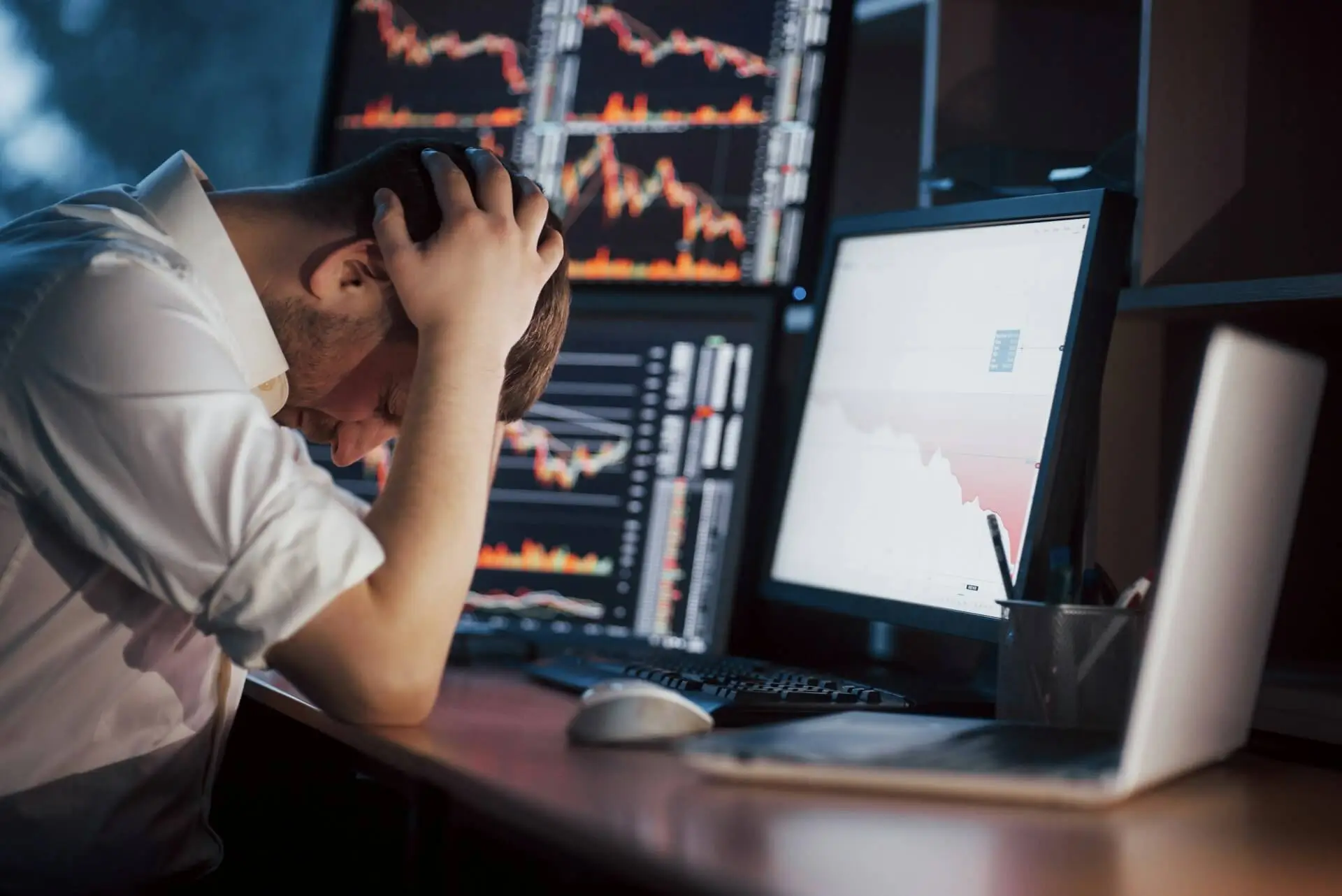
The Scale of the Impact
The scope of the disruption was enormous. AWS underpins a large portion of the global internet, hosting everything from banking systems to entertainment platforms. When one region fails, the impact extends far beyond Amazon itself.
Industries affected:
- Finance: Delays in online payments and banking operations;
- Retail: Interrupted order processing and slow e-commerce transactions;
- Media: Delayed or stalled content streaming;
- IoT: Smart home and connected devices briefly stopped responding.
For small businesses, the outage meant lost website traffic and revenue. For larger enterprises, it caused operational setbacks and customer frustration. Even internal communication tools hosted on AWS were temporarily unavailable.
Although services were restored within hours, the incident revealed how one technical failure in a single data center can disrupt critical operations around the world.
Why These Outages Keep Happening
Outages like this one are not isolated accidents. They reveal how complex and interconnected modern cloud infrastructure has become. AWS runs millions of servers that power websites, mobile apps, payment systems, and enterprise tools around the world. When even one small component stops working correctly, the effects can spread faster than most people realize.
The latest incident started in US-EAST-1, AWS’s busiest data center region, which handles a large share of global internet traffic. Because so many critical systems rely on it, even a short disruption can have far-reaching consequences. In this case, the failure of a network monitoring system interrupted how services communicated with each other, causing a chain reaction across applications hosted on AWS.
The truth is that no cloud provider is completely immune to such failures. Last year, a software update error from cybersecurity firm CrowdStrike caused what The Guardian described as the largest outage in history, temporarily grounding flights and disrupting hospitals and businesses worldwide.
The more we depend on centralized systems, the more fragile they become when something goes wrong.
This outage reminded businesses once again that cloud technology, while powerful, is not invincible. It delivers speed, scalability, and efficiency, but those advantages come with a shared responsibility to plan for the moments when technology falters.
Lessons for Businesses
For most companies, cloud computing is the foundation of their operations. It allows teams to scale quickly, store massive amounts of data, and serve customers anywhere in the world. Yet the AWS outage showed how risky it can be to rely too heavily on one provider or one data center region.

When a service like AWS goes down, the consequences can extend far beyond a temporary inconvenience. E-commerce stores lose sales, financial platforms face delays, and internal systems that rely on cloud databases or APIs can stop functioning entirely. These risks make it essential for businesses to prepare long before an outage occurs.
Some practical steps include:
- Distribute resources across regions. Use multiple AWS regions or availability zones to reduce dependency on a single location.
- Adopt a multi-cloud strategy. Combining providers such as AWS, Google Cloud, and Azure can keep services online even if one fails.
- Create reliable backups. Store critical data in separate systems that remain accessible during downtime.
- Develop a communication plan. Inform customers and partners quickly when disruptions happen to maintain trust and transparency.
- Test disaster recovery processes. Regularly simulate outage scenarios to confirm that systems and teams can respond effectively.
Companies that build resilience into their infrastructure experience fewer long-term impacts when problems arise. The AWS outage may have been short, but it served as a reminder that redundancy, planning, and clear communication are what truly keep a business online.
Conclusion
The AWS outage on October 20 was brief, but its impact was impossible to ignore. In just a few hours, it disrupted everything from social networks and online stores to financial systems and customer service platforms. For many users, it was a reminder of how invisible yet essential cloud infrastructure has become to daily life.
For businesses, the lesson is clear. Cloud technology offers unmatched flexibility and power, but it also demands responsibility. Building systems with backups, spreading workloads across regions, and preparing for unexpected downtime are no longer optional; they are essential steps in maintaining stability and trust.
The internet’s strength lies in its ability to adapt and recover. As companies continue to innovate and grow in the cloud, resilience must become part of that innovation. Outages like this one may be temporary, but the lessons they leave behind are lasting.
The update introduces rounded corners, floating playback controls, and a glossy transparency effect across the interface — all aimed at creating a more immersive viewing experience. But as often happens with major redesigns, not everyone is impressed. Many longtime users feel the new look sacrifices usability for aesthetics.
So, is YouTube’s new UI really that bad, or are users just struggling to adapt to change? Let’s take a closer look at what’s new, why it’s sparking backlash, and what designers can learn from one of the most talked-about interface updates of the year.
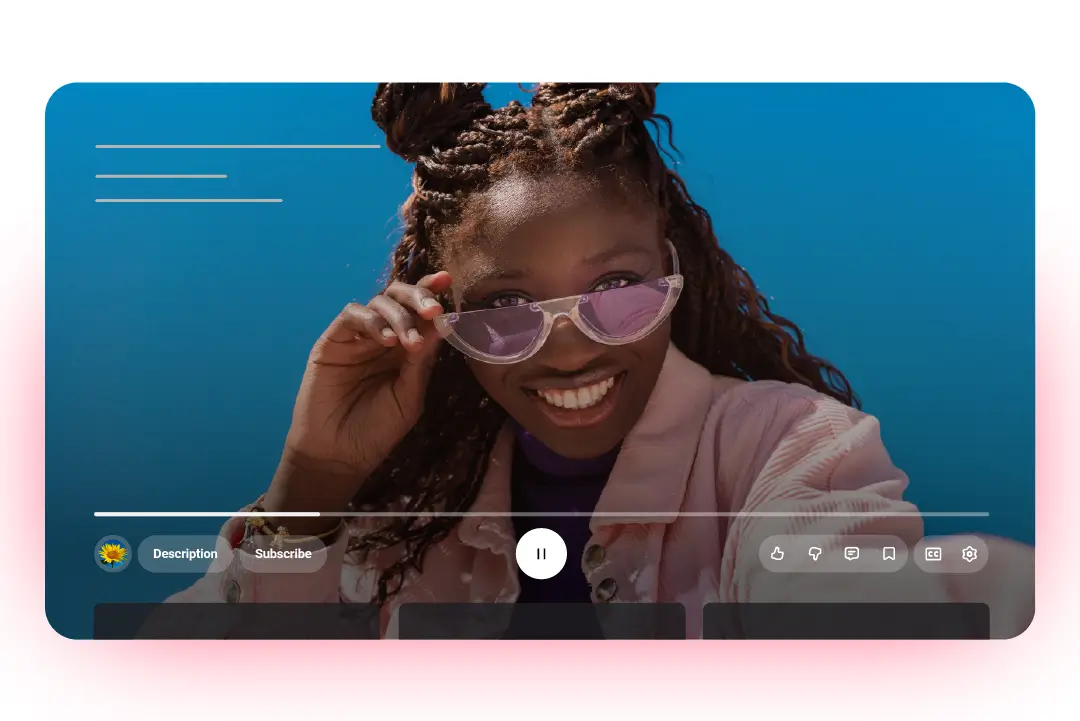
What Changed in YouTube’s UI
YouTube’s redesign focuses on creating a cleaner and more immersive experience that fits modern interface trends. The update introduces a softer visual language with rounded corners, transparent overlays, and more spacing between elements.
Here are the main design updates users are noticing:
- Floating playback controls: The buttons for play, pause, and volume now appear as floating icons over the video instead of being fixed in the black control bar.
- Translucent backgrounds: Panels and buttons have a glass-like blur effect, making the interface look lighter and more fluid.
- Rounded corners and card-style sections: Video thumbnails, buttons, and even the player window follow a more rounded, unified shape.
- Simplified comment layout: The comment section feels more like a mobile app feed, with less separation between text and avatars.
- Consistent iconography and typography: The new typeface and icon style align with Google’s Material You design system, emphasizing minimal contrast and visual uniformity.
While the redesign clearly aims for a polished and unified aesthetic, it also changes how users interact with familiar elements. The new floating layout and transparency introduce a sense of depth, but some argue that they reduce visual clarity, especially in darker themes.
User Backlash: Why People Are Upset?
Despite YouTube’s intention to modernize its interface, much of the community response has been negative. Across Reddit, X, and design forums, users describe the update as “unnecessary,” “harder to navigate,” and “too glossy.” Many say it feels like a downgrade rather than an upgrade.
Here are the main frustrations users have shared:
- Loss of familiarity: Frequent viewers feel that the design no longer looks or feels like YouTube. Familiar button placements and contrast levels have shifted, creating confusion.
- Reduced readability: Transparent overlays and low-contrast icons make the interface harder to use, especially in dark mode or bright environments.
- Wasted space: Some complain about excessive padding and white space, which pushes useful content lower on the screen.
- Visual identity concerns: The “liquid glass” style resembles Apple’s and Google’s latest aesthetic, leading users to feel YouTube is losing its own unique brand character.
Beyond these visual issues lies a deeper emotional response. People grow attached to familiar interfaces because they become part of their daily routine. When that experience changes overnight, even small adjustments can trigger frustration. It’s not just about design preferences; it’s about user-centered design.
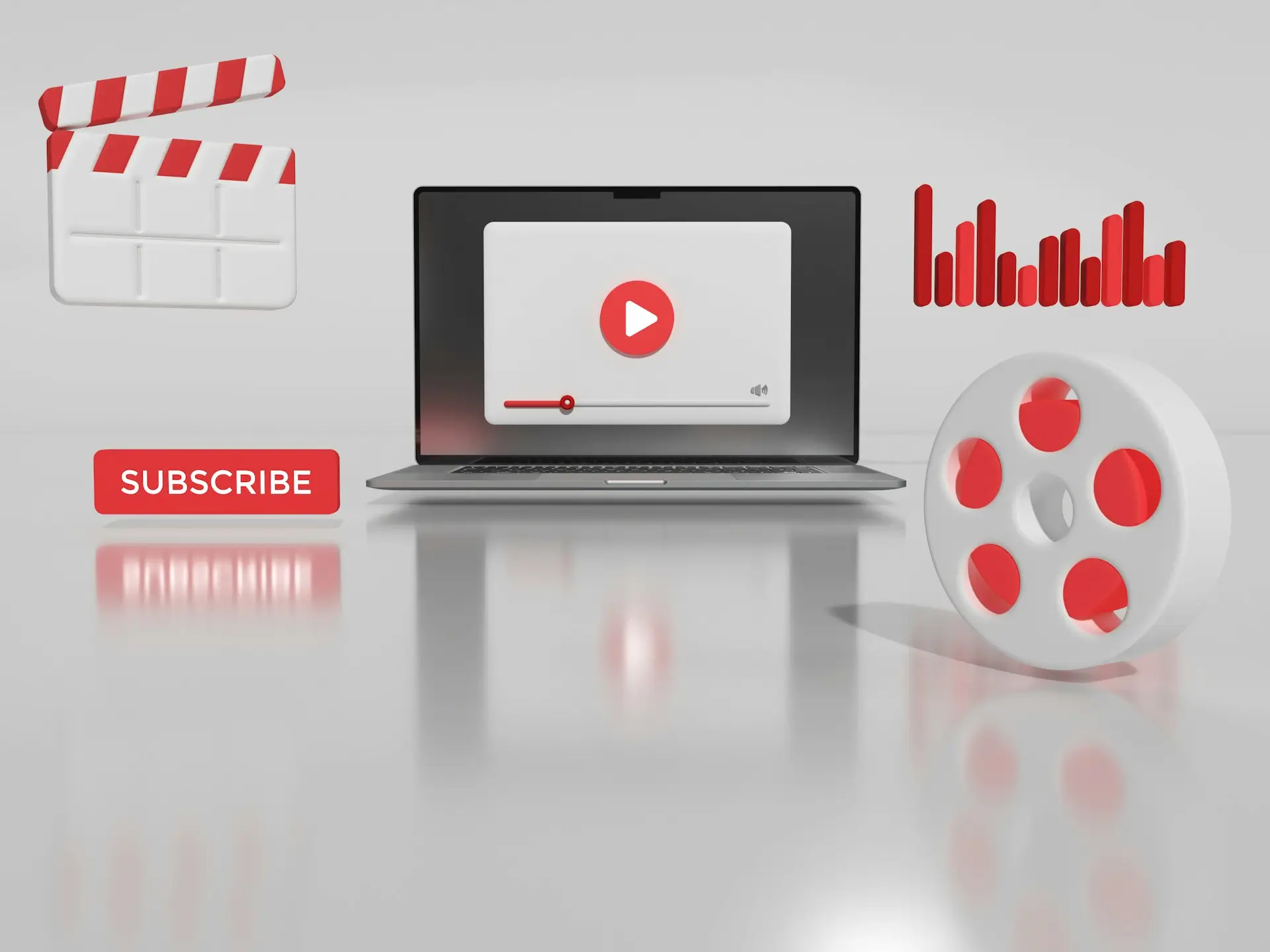
The Design Perspective: Why YouTube Might Be Right?
From a web design standpoint, YouTube’s update isn’t without logic. The platform has been moving toward visual consistency across devices, and this redesign aligns the desktop version with the cleaner, touch-friendly mobile interface.
The new layout focuses on minimal distractions, smoother animations, and visual depth that guides the user’s attention toward the content rather than the interface. Transparent layers and rounded edges give the site a softer, modern appearance that matches today’s design trends.
In essence, YouTube is trying to future-proof its interface. Whether users love it or hate it, the update reflects a broader industry shift toward simplicity and visual harmony.
Conclusion
YouTube’s new interface may not be perfect, but it is not a disaster either. The redesign reflects the ongoing tension between aesthetic innovation and user comfort. While many users miss the older look, others appreciate the refined layout and simplicity.
Over time, as people adapt, this update might feel less intrusive and more natural. For designers, it serves as a reminder that even small visual adjustments can spark strong emotional reactions, and that good design is not just about how it looks, but how it feels to the people who use it every day.
That’s where a website audit checklist comes in. It’s a structured way to review your site from top to bottom, covering SEO, content quality, technical performance, and overall usability. Instead of guessing what’s wrong, a proper audit gives you measurable insights into how your website performs, where it falls short, and what to fix first.
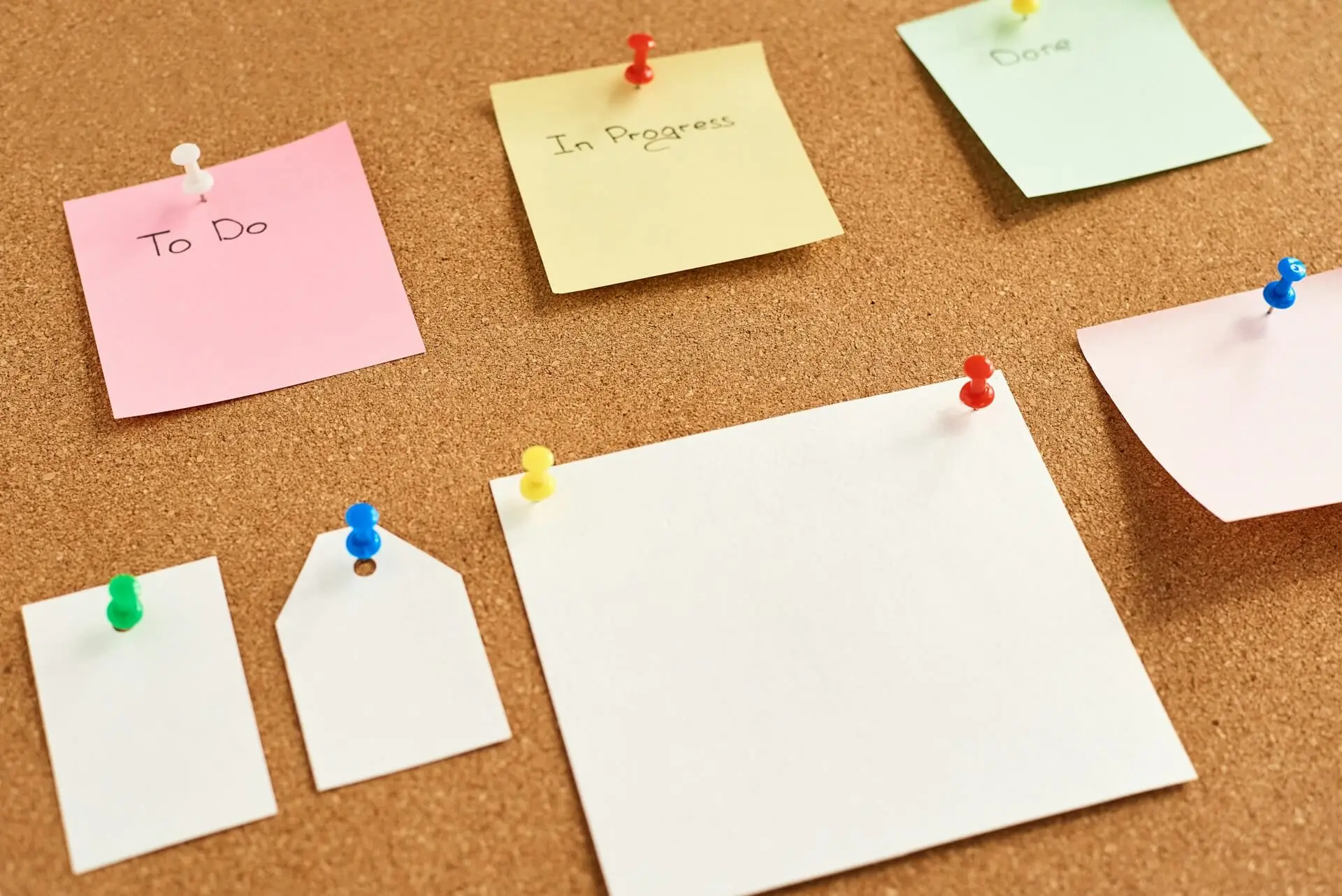
Whether you manage a large e-commerce platform or a small business website, running an audit regularly ensures your site stays fast, search-friendly, and user-focused. In this guide, you’ll find a comprehensive checklist for website audit that breaks down everything you should review, from on-page SEO and content relevance to Core Web Vitals and UX design.
By the end, you’ll have a clear roadmap for improving your website’s performance and creating a smoother experience for your visitors.
Why a Website Audit Matters
A website audit is more than a technical checkup. It is a deep analysis that shows how well your website performs across search visibility, usability, and overall efficiency. When done correctly, it reveals what helps your site grow and what holds it back.
Regular audits are important because search engines and user expectations constantly evolve. What worked a year ago might not be enough today. Algorithms change, competitors improve, and design trends shift. A website audit checklist helps you stay ahead by showing where your SEO strategy, content, or technical setup might be falling behind.
Here are a few key benefits of conducting regular website audits:
- Improved Search Performance: By identifying technical SEO issues, missing metadata, or duplicate pages, you can strengthen your site’s ability to rank higher in search results.
- Better User Experience: A faster, easier-to-navigate website keeps visitors engaged longer and helps reduce bounce rates.
- Stronger Conversions: Fixing broken links, updating content, and improving structure often lead to more actions such as sign-ups, inquiries, or purchases.
- Data-Driven Decisions: An audit gives you real data instead of assumptions, helping you prioritize what to improve first.
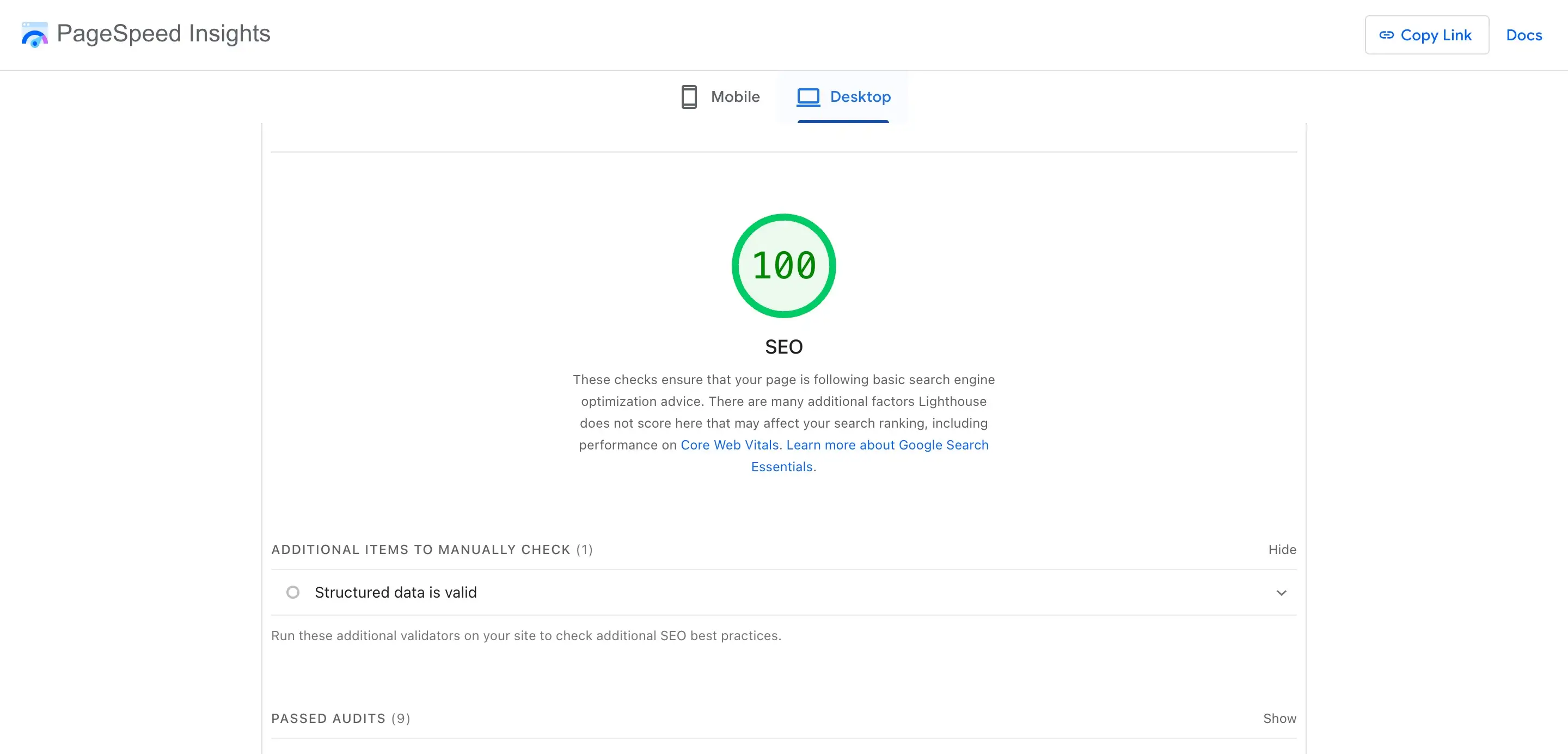
SEO Audit Checklist
The first step in your website audit checklist is to review SEO. Search engine optimization affects how easily people can find your website, how your pages appear in search results, and how relevant your content looks to users and algorithms. A proper SEO audit helps you discover errors, missed opportunities, and outdated practices that could limit your visibility.
1. Technical SEO
Technical SEO forms the foundation of every successful website. Start by checking whether search engines can properly crawl and index your pages.
- Crawlability: Make sure your robots.txt and XML sitemap are correctly configured and updated.
- Indexation: Check that important pages are indexed and duplicates or outdated URLs are removed.
- HTTPS and Security: All pages should load securely with HTTPS.
- Structured Data: Add schema markup where relevant to improve how your pages appear in search results.
- Redirects and Broken Links: Scan for 404 errors or redirect loops that can waste crawl budgets and frustrate visitors.
2. On-Page SEO
Once your technical base is solid, focus on On-Page SEO, optimizing what users see.
- Review meta titles and descriptions to make sure they are unique, keyword-focused, and within character limits.
- Check that every page has a clear H1 and logical heading hierarchy (H2s, H3s).
- Make sure your primary keyword and relevant variations appear naturally throughout the page.
- Audit internal links to confirm they guide users toward related pages and distribute authority evenly.
- Optimize images with descriptive alt text and clean file names.
3. Off-Page SEO
Even though off-page SEO occurs outside your site, it still plays a role in your overall audit.
- Review your backlink profile to identify toxic or spammy links that might harm your rankings.
- Track referring domains, brand mentions, and external citations for quality and relevance.
- Consider outreach or partnerships to strengthen authority in your niche.
Website Content Audit Checklist
Your content is what connects your website to your audience. Even if your site is technically perfect, weak or outdated content can hurt performance and reduce trust. A website content audit checklist helps you evaluate not just what you say, but how effectively you say it, across every page, blog post, and product description.
1. Review Content Quality and Relevance
Start by analyzing whether your existing content aligns with your brand message and audience needs.
- Identify outdated, thin, or duplicated pages that no longer serve a purpose.
- Check if your content answers user questions clearly and fully.
- Look for tone and style consistency across all sections of your website.
- Refresh old articles with updated data, visuals, and internal links.

2. Analyze Keyword and Search Intent Alignment
Your content should attract the right audience through search.
- Ensure each page targets a specific keyword and search intent.
- Avoid keyword stuffing and focus on natural language that fits user queries.
- Add related terms where appropriate to support contextual relevance.
3. Evaluate Readability and Engagement
Readable, structured content performs better both for users and search engines.
- Use short paragraphs, bullet points, and clear subheadings.
- Check sentence length and readability using tools like Hemingway or Grammarly.
- Include visuals such as infographics or charts to make information easier to digest.
- Track metrics like time on page and bounce rate to gauge engagement.
4. Check Internal and External Links
Good linking enhances both SEO and user experience.
- Verify that all internal links work and lead to relevant pages.
- Add links from high-performing pages to those that need more visibility.
- Review external links to ensure they point to credible, up-to-date sources.
Website Speed & Performance Audit
A fast, reliable website keeps visitors engaged and supports better rankings. Search engines consider speed a ranking factor, and users quickly abandon slow-loading pages. That’s why every website audit checklist should include a detailed review of your site’s technical performance.
1. Test Website Loading Speed
Start by measuring how quickly your pages load using tools like Google PageSpeed Insights, GTmetrix, or Lighthouse.

- Identify which pages have the longest load times.
- Compare performance across desktop and mobile devices.
- Focus on improving your Core Web Vitals: Largest Contentful Paint (LCP), First Input Delay (FID), and Cumulative Layout Shift (CLS).
2. Optimize Images and Media
High-quality visuals can easily slow your website if not optimized.
- Compress images without losing clarity using tools such as TinyPNG or Squoosh.
- Implement lazy loading for below-the-fold images.
- Use next-gen formats like WebP where supported.
- Ensure videos are embedded efficiently or hosted externally.
3. Reduce Code and Server Load
Your site’s backend plays a big role in speed.
- Minify CSS, JavaScript, and HTML files to remove unnecessary code.
- Limit the number of third-party scripts and plugins.
- Enable browser caching and use a Content Delivery Network (CDN) for faster global delivery.
- Review server response time and upgrade hosting if necessary.
4. Test Mobile Performance
Since most users browse on mobile, your audit should focus heavily on responsiveness.
- Make sure the design adapts properly to all screen sizes.
- Avoid oversized images and unresponsive buttons.
- Use Google’s Mobile-Friendly Test to identify and fix issues.
A performance-focused audit website checklist helps you identify where your site is losing speed and user attention.
Tools for Conducting a Website Audit
Performing a complete audit manually can take time. Choosing the right tools simplifies the process and gives you accurate data to act on. Below are some of the most effective platforms to include in your website audit checklist.
SEO and Technical Tools
- Google Search Console: Helps track indexing status, keyword performance, and crawl issues.
- Ahrefs or Semrush: Ideal for backlink analysis, keyword tracking, and competitor comparisons.
- Screaming Frog: A must-have for scanning your website structure, broken links, redirects, and metadata.

Performance and Speed Tools
- Google PageSpeed Insights: Tests speed and Core Web Vitals for desktop and mobile.
- GTmetrix: Provides waterfall reports that show which elements slow your pages down.
- Lighthouse: Offers detailed audits for performance, accessibility, SEO, and best practices.
Content and UX Tools
- Hotjar or Microsoft Clarity: Show heatmaps and user session recordings to visualize behavior.
- Grammarly and Hemingway: Improve writing clarity and tone consistency.
- Google Analytics 4 (GA4): Tracks engagement, traffic sources, and user actions to measure content effectiveness.
How Often to Audit Your Website
A website audit should never be a one-time task. The web evolves quickly, and small issues can grow into serious problems if left unchecked. The right audit frequency depends on your website’s size, traffic, and update pace.
- Quarterly Audits: Best for most businesses to catch SEO, speed, and UX issues before they affect performance.
- Monthly Mini Audits: A lighter review of content updates, new pages, and tracking setup.
- After Major Changes: Always audit after redesigns, platform migrations, or plugin updates to detect technical issues early.
Regularly following your website audit checklist ensures your site continues to meet modern standards for speed, security, and user satisfaction.
Conclusion
Your website is the core of your online presence. Keeping it optimized requires consistent attention to detail, not only in how it looks, but in how it performs. By following a structured website audit checklist, you can spot weaknesses before they impact your audience and turn your site into a stronger, faster, and more engaging platform.
If you need expert help analyzing and optimizing your website, I offer SEO services designed to improve visibility, speed, and user experience, ensuring your website performs at its best in every area.
But when it comes down to Squarespace vs WordPress, which is the better choice for you? Let’s dive deep into the differences, strengths, and drawbacks so you can make a confident decision.
What is Squarespace?

Squarespace is an all-in-one website builder that focuses on simplicity and design. It allows users to create professional-looking websites using drag-and-drop tools and beautifully designed templates. Everything, from hosting to analytics, is included in the platform, which means you don’t need to manage external plugins or worry about technical details.
Squarespace is especially popular with creatives, small businesses, and entrepreneurs who want a site that looks polished without requiring coding skills.
What is WordPress?
WordPress is the world’s most popular content management system (CMS), powering over 40% of all websites on the internet. Unlike Squarespace, WordPress is open-source software, which means it’s highly flexible and can be customized with thousands of themes and plugins.
Originally built as a blogging platform, WordPress has evolved into a versatile solution capable of powering everything from small blogs to enterprise-level websites. It’s the go-to choice for those who want complete control over their site’s design, features, and growth.
Ease of Use: Simplicity vs Flexibility
Squarespace has built its reputation on simplicity. Its interface is clean, beginner-friendly, and packed with stylish templates that look great without much effort. For someone who wants to launch a professional-looking site quickly, it’s hard to beat.
WordPress, by contrast, is more like a blank canvas. You’ll have more freedom, but with that comes responsibility. The dashboard may feel overwhelming at first, and getting the design you want can require experimenting with themes, plugins, or even a little coding.
- Squarespace = ready-to-wear fashion. Elegant, easy, but limited in choices.
- WordPress = tailor-made suit. It takes more work, but it fits exactly the way you want.
Design and Customization
When it comes to design, both platforms shine, but in very different ways.
Squarespace is known for its polished, modern templates. They’re designed by professionals, which means you can launch a portfolio, blog, or business site that already looks stunning. The downside? Customization has limits. You can tweak colors, fonts, and layouts, but only within the framework provided.

WordPress, on the other hand, offers thousands of themes, ranging from free minimalist designs to advanced, feature-packed templates. However, themes alone usually aren’t enough to achieve a truly unique or fully functional site.
That’s why many users extend their websites with page builders, plugins, or custom code. This combination of tools provides a high level of control, making WordPress ideal for people who want their websites to stand out and evolve over time.
- Squarespace: Great out-of-the-box designs, less flexibility.
- WordPress: Unlimited customization, but may require more effort.
Features and Functionality
The feature sets of Squarespace and WordPress reflect their overall philosophies.
Squarespace focuses on being an all-in-one platform. It includes blogging, scheduling, image galleries, and e-commerce right out of the box. Everything works smoothly without needing extra add-ons.
WordPress takes a different approach. It starts simple, but its true strength lies in plugins. There are over 60,000 available, covering everything from contact forms to membership systems. Need a podcast manager? A learning management system? A custom booking engine? WordPress has a plugin for it.
Here’s how they compare in functionality:
- Squarespace: Perfect for people who want built-in features that “just work.”
- WordPress: Ideal for those who need advanced, custom solutions.
Squarespace vs WordPress SEO
Search engine optimization (SEO) is a crucial factor for any website that wants to grow its audience. Here’s where differences become clear.
Squarespace offers built-in SEO basics: customizable titles, meta descriptions, SSL security, mobile-friendly templates, and automatic clean URLs. These features are enough for beginners and small sites, ensuring pages are optimized without much extra effort.
WordPress, however, takes SEO to another level. With plugins like Yoast SEO or Rank Math, you can fine-tune everything—XML sitemaps, schema markup, redirects, internal linking, and keyword optimization. This makes it the stronger option for content-heavy websites or businesses aiming for long-term organic growth.
In other words:
- Squarespace SEO is simple and effective for most small projects.
- WordPress SEO is powerful, advanced, and customizable for ambitious growth.
If SEO is your top priority, WordPress leads in the Squarespace vs WordPress SEO debate.

Blogging Experience
Both platforms can support a blog, but they feel very different in practice.
Squarespace blogs are straightforward. You can add posts, insert images, and schedule content easily. It’s ideal for someone who just wants a clean, simple way to share thoughts and updates.
WordPress, however, was originally built as a blogging platform, and it shows. Its editor (Block Editor/Gutenberg) supports rich formatting, media embeds, categories, tags, and custom taxonomies. For content creators who publish regularly and want maximum control, WordPress remains the gold standard.
E-commerce Capabilities
Squarespace includes e-commerce features natively. Adding a store is simple, and managing products, payments, and inventory is streamlined. It’s excellent for small businesses or entrepreneurs who want to sell a handful of products without fuss.
WordPress doesn’t come with built-in e-commerce, but it integrates seamlessly with WooCommerce, one of the most powerful e-commerce solutions on the web. WooCommerce supports everything from small online shops to large-scale marketplaces with advanced features.

If your goal is a simple online shop, Squarespace is faster to set up. If you’re building something scalable and customizable, WordPress with WooCommerce is hard to beat.
Scalability and Long-Term Growth
One of the biggest questions to ask is: Where do I see my website in 2–5 years?
- Squarespace is perfect if you want a site that stays relatively simple: a portfolio, small business website, or blog that won’t require complex features.
- WordPress is better if you expect your website to grow significantly. Whether it’s adding a membership area, an online course, or scaling to thousands of posts, WordPress can handle it.
In summary:
- Squarespace = quick, stylish, manageable growth.
- WordPress = long-term scalability and advanced capabilities.
WordPress vs Squarespace: Who Should Choose What?

To make things clearer, let’s break it down by user type.
Squarespace is best for:
- Creatives who need visually appealing portfolios.
- Small businesses that want a professional site without technical hassle.
- Beginners who value ease of use over deep customization.
WordPress is best for:
- Bloggers and content creators who publish frequently.
- Businesses planning to scale their websites with advanced features.
- Anyone who wants total control over design, SEO, and functionality.
Final Thoughts
The Squarespace vs WordPress debate doesn’t have a single winner; it depends on your goals.
If you want simplicity, style, and an all-in-one solution, Squarespace is a fantastic choice. But if you crave flexibility, advanced SEO, and long-term scalability, WordPress is the platform for you.
When considering WordPress vs Squarespace, think about your own comfort level with technology, your need for customization, and your vision for future growth. Choosing the right builder now will save you time, effort, and frustration later.
So ask yourself: Do you want a site that’s quick and polished, or one that’s fully in your control? Once you answer that, the decision between Squarespace and WordPress becomes much easier. And if you’re still unsure about the best path forward, a skilled web developer can help you create a website that’s both effective and aligned with your goals.
If you’ve been wondering how to transform your online presence into a growth engine, here are 10 proven ways to leverage social media effectively.

1. Build a Strong Brand Presence
The foundation of success with social media as a marketing tool lies in creating a recognizable and trustworthy brand. A strong presence makes you memorable in a crowded feed.
To achieve this:
- Use consistent branding (colors, logos, fonts) across all platforms;
- Craft a clear bio that communicates your unique value;
- Post with a consistent tone of voice that reflects your brand personality.
Think of your social profiles as digital storefronts - first impressions matter. The more polished and consistent your presence, the more likely people are to follow and engage.
2. Engage With Your Audience
One of the biggest advantages of using social platforms is the ability to connect directly with your audience. Unlike one-way advertising, social platforms enable interactive dialogue with customers.
Here’s how to deepen engagement:
- Reply to comments and direct messages promptly;
- Ask questions in your captions to encourage interaction;
- Use polls, quizzes, and interactive stories to spark participation.
Customers are far more likely to support brands that make them feel heard. Consistent engagement nurtures confidence and deepens brand loyalty.
3. Leverage Paid Advertising
Organic reach is valuable, but paid campaigns take social media as a tool for marketing to the next level. Platforms like Facebook, Instagram, LinkedIn, and TikTok allow businesses to target specific demographics, interests, and behaviors.
Benefits of paid advertising include:
- Highly targeted audience reach;
- Detailed analytics to measure ROI;
- Opportunities to retarget people who already interacted with your brand.
Even a modest budget can yield strong results when campaigns are properly optimized.
4. Share Valuable Content
People don’t log onto social platforms to be bombarded with sales pitches. They come for content that educates, entertains, or inspires. That’s why sharing value-driven content is central to success with social media as a marketing strategy.

Content ideas include:
- Educational posts (how-tos, industry insights);
- Visuals like infographics, reels, or short videos;
- Behind-the-scenes content to humanize your brand.
A balanced content mix keeps your feed fresh and appealing while subtly showcasing your products or services.
5. Use Influencer Partnerships
Influencer marketing is no longer just for global brands, it’s an accessible and powerful tactic for businesses of all sizes. Partnering with influencers allows you to tap into pre-built communities that already trust their recommendations.
When thinking about how to use social media as a marketing tool through influencers, consider:
- Collaborating with micro-influencers (1k–50k followers) for higher engagement rates.
- Choose influencers whose audience reflects the market you want to reach.
- Creating authentic campaigns rather than forced promotions.
These partnerships can expand your reach and provide the social proof needed to boost conversions.
6. Run Contests and Giveaways
Contests and giveaways are excellent tactics to boost visibility and engagement in a short period. People love the chance to win something, and they’re often willing to share your page or tag friends to enter.
Effective giveaway strategies include:
- Asking participants to follow your page;
- Encouraging tagging of friends or sharing posts;
- Offering a prize that aligns with your brand (not just generic rewards).
This method not only increases followers but also generates buzz around your products or services.
7. Analyze and Optimize Performance
One of the major strengths of social media as a marketing channel is the ability to track performance in real time. Unlike traditional campaigns, you can measure exactly what works and what doesn’t.
Steps to optimize:
- Monitor engagement metrics (likes, shares, comments);
- Track reach, impressions, and click-through rates;
- Adjust posting times, formats, or targeting based on results.
Regular analysis allows you to refine your strategy, ensuring every post contributes toward your broader goals.

8. Leverage Social Listening
Social listening goes beyond analytics; it’s about understanding how your audience perceives your brand and industry. By monitoring conversations, you can gather insights to improve products, services, and customer experience.
Practical steps:
- Use tools like Hootsuite or Brandwatch to track mentions;
- Respond to both positive and negative feedback;
- Identify trending topics to create timely, relevant content.
This proactive approach helps you stay ahead of competitors and connect with your audience on a deeper level.
9. Drive Traffic to Your Website
While social platforms are great for brand visibility, your ultimate goal should be directing users to your website, where conversions happen.
Here’s how to do it effectively:
- Add CTAs to posts that link back to landing pages;
- Use link-in-bio tools to showcase multiple offers;
- Share blog posts, case studies, or product pages directly.
By aligning social media with your website, you create a seamless funnel that guides followers toward becoming customers. A well-designed website with strong user experience is essential here, it ensures that once visitors land on your site, they can easily navigate, find information, and complete actions without friction.
10. Create a Social Strategy Marketing Plan
Random posting isn’t enough. To maximize impact, you need a structured plan that aligns with your business goals. A well-designed social strategy marketing plan ensures you’re not just active but strategic.
Elements of a strong plan include:
- Defining clear objectives (brand awareness, leads, sales);
- Identifying your target audience and their behaviors;
- Establishing KPIs to measure success;
- Creating a content calendar for consistent posting.
This roadmap ensures that your efforts are intentional, measurable, and scalable.
Frequently Asked Questions
1. Why is social media important as a marketing tool?
Social media gives businesses direct access to their audience. Unlike traditional channels, it allows for real-time engagement, targeted advertising, and measurable results. By using social media as a marketing tool, companies can build brand awareness, drive traffic, and convert followers into loyal customers - all at a fraction of the cost of traditional advertising.
2. How do I start using social media as a marketing channel?
The first step is choosing the right platforms where your target audience spends time. Once selected, focus on building a strong brand profile, posting consistently, and engaging with followers. As you grow, you can expand into paid campaigns and influencer partnerships to maximize your reach with social media as a marketing channel.
3. What type of content works best on social media for marketing?
It depends on your audience, but generally:
- Short-form videos and reels for quick engagement;
- Educational posts, infographics, and blogs for value-driven content;
- Behind-the-scenes stories to humanize your brand.
The key is mixing formats and keeping your posts aligned with your brand’s goals.

4. In what ways can small businesses use social media as a marketing strategy?
Small businesses can use social media as a marketing approach to compete with larger companies by targeting niche audiences and creating authentic connections. Even with limited budgets, tools like organic posting, local hashtags, and micro-influencer collaborations can generate awareness and loyal customers.
5. How do I measure success when using social media as a marketing tool?
Success is measured through analytics. Look at key performance indicators such as engagement rate, click-throughs, follower growth, and conversions. Most platforms provide insights that help you understand what’s working. Combining this data with your business goals will show whether your social strategy is paying off.
Conclusion
Leveraging social media as a marketing approach is no longer optional; it’s essential. By building a strong presence, engaging with your audience, investing in advertising, and following a structured strategy, you can turn social platforms into growth engines for your business.
These tactics, ranging from influencer partnerships to analytics-driven decisions, provide a blueprint to maximize your results. The key is consistency: social media rewards brands that show up, deliver value, and connect authentically.
Begin with small steps, track your results, and adjust your approach as needed. Over time, these efforts compound, positioning your brand for greater visibility, stronger customer relationships, and measurable business growth.
In this beginner’s guide, I’ll walk through the most important UX design principles you need to know. You’ll learn how to think like a user, structure content clearly, and make smart design decisions that lead to better results.
Understanding UX in Digital Design
User Experience, or UX, refers to how people interact with a product or service, especially digital ones like websites or apps. It’s about more than just visuals. Good UX considers how intuitive, efficient, and satisfying the experience is for the user.
The principles of UX design serve as a foundation for creating digital products that meet user needs and reduce friction. When applied correctly, these principles help guide users effortlessly through a flow, whether it’s reading content, signing up, or making a purchase.
Designing with UX in mind means putting users first. It involves empathy, problem-solving, and constant testing. As you learn to follow strong UX design principles, your designs will become more accessible, effective, and enjoyable for real users.

UX Design Principles Every Beginner Should Know
1. Clarity
A clear interface makes users feel confident. When users land on a page, they should immediately understand what the site or app does and what action to take next. Confusing layouts, vague labels, or cluttered screens can quickly lead to frustration or drop-offs.
To improve clarity, use plain language, meaningful visuals, and intuitive layouts. Prioritize important information and make interactive elements (like buttons or links) easy to recognize. Remember, users shouldn’t have to think twice about where to go or what to do.
Quick ways to enhance clarity:
- Use familiar icons and patterns;
- Avoid jargon or technical language;
- Make calls-to-action stand out;
- Stick to a clean, visual hierarchy.
2. Consistency
Consistency helps users feel comfortable. When layouts, colors, and functions behave the same way across pages, users don’t have to re-learn the interface every time they interact with something new.
This applies not only to visuals (like buttons, colors, or spacing) but also to tone of voice and navigation patterns. A consistent design language helps build trust and keeps the user focused on the task, not on figuring out how your site works.
3. Feedback
Every action should have a reaction. Whether a user clicks a button, uploads a file, or submits a form, your interface should acknowledge that something happened.
Good feedback prevents confusion and helps users stay in control. Examples include micro-interactions like hover effects, confirmation messages, error alerts, and progress indicators. Even small details like a button changing color when clicked contribute to a smoother user experience.

4. Hierarchy
Hierarchy is about guiding attention. Users don’t read every word or look at every corner of the screen, they scan for what matters. Your job is to help them spot what’s important.
Use size, spacing, contrast, and grouping to establish a clear visual path. Headlines should be more prominent than body text. Primary actions should stand out more than secondary ones. Strong hierarchy leads users through your content smoothly and intentionally.
Hierarchy tips:
- Use larger font sizes for headings;
- Group related items visually;
- Make CTAs more prominent than navigation links;
- Use whitespace to separate content zones.
5. Accessibility
An inclusive product works for everyone. Accessibility ensures that users with visual, auditory, motor, or cognitive challenges can still interact with your site or app effectively.
Basic accessibility practices include providing alt text for images, ensuring good color contrast, supporting keyboard navigation, and using semantic HTML. By designing with accessibility in mind, you also improve the overall UX for everyone, not just those with disabilities.
6. User Control
Users want to feel in charge, not trapped by your design. That means allowing them to undo actions, exit popups easily, or navigate back without losing progress.
For example, include “Cancel” buttons alongside “Submit,” allow users to preview changes, and avoid auto-saving irreversible actions. Empowering users helps build trust and reduces the fear of making a mistake.

7. Simplicity
The best interfaces feel effortless. Simplicity is about stripping away the non-essential to help users complete their tasks without distraction.
Limit options, streamline workflows, and avoid decorative elements that don’t serve a purpose. A simple interface doesn't mean basic or boring; it means focused, purposeful, and user-friendly.
Mobile UX Design Key Principles
Designing for mobile requires a slightly different mindset. Smaller screens, touch-based interactions, and varying internet speeds all influence how users experience your product. While the core UX design principles still apply, there are specific considerations when it comes to mobile environments.
The mobile UX design key principles revolve around simplicity, speed, and accessibility. Users often engage with mobile apps or sites while on the go, so they expect fast load times, clear navigation, and minimal effort to complete tasks. A cluttered or unresponsive mobile design can quickly push users away.

Best practices for mobile UX design:
- Prioritize thumb-friendly navigation and tap targets;
- Use clear, concise copy and remove unnecessary steps;
- Optimize images and code for fast loading;
- Stick to a single-column layout for better readability;
- Make sure buttons are easy to see and press.
In mobile design, less truly is more. The fewer obstacles you place between the user and their goal, the better the experience. Always test designs on multiple devices and screen sizes to ensure they remain usable and intuitive no matter how they’re accessed.
UX Pitfalls Beginners Should Watch Out For
Even with a solid understanding of UX design principles, it’s easy to slip into habits that unintentionally harm the user experience. Recognizing and avoiding common UX mistakes is just as important as knowing what to do right.
Many beginners tend to overdesign, adding too many features, visuals, or options in an attempt to impress. This often leads to clutter, confusion, and decision fatigue for the user. Others might overlook accessibility or forget to test designs across different devices and screen sizes.
Here are a few common UX mistakes to avoid:
- Ignoring mobile responsiveness;
- Overloading users with too many choices;
- Using unclear or generic navigation labels;
- Failing to provide user feedback for interactions;
- Designing for aesthetics instead of usability;
- Neglecting real user testing and feedback.
Following UX design principles doesn’t mean your design has to be complex. In fact, the best experiences are often the simplest. Always aim to reduce friction, support user goals, and keep things intuitive.

Conclusion: Start Designing with UX in Mind
Strong user experience isn’t just a nice-to-have; it’s the foundation of any successful digital product. By applying these core UX design principles, you can create websites and applications that are clear, intuitive, and truly user-friendly. Whether you're designing for desktop or mobile, a user-first mindset leads to better engagement and long-term growth.
If you're looking for guidance from a user experience designer who understands how to combine strategy, usability, and clean design, I’m here to help. I create thoughtful, functional, and conversion-focused experiences that align with both user needs and business goals.
Ready to create a better experience? Let’s talk about how I can improve your product through smart, user-centered design.






